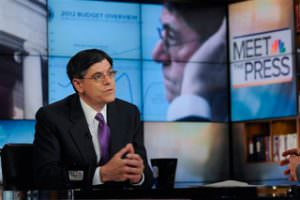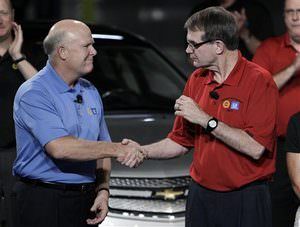Playing Monopoly With America’s Health
Anyone infuriated by the grossly inflated compensation of the masters of finance should check out the incredible earnings of the top executives in the health insurance business.Anyone infuriated by the bonuses of the masters of finance should check out the top executives in the health insurance business.Popular disgust over the fat premiums that financial executives bestow upon themselves is burgeoning, and rightly so. Those Wall Street piggy banks are filling up with billions upon billions of government-subsidized dollars.
But anyone infuriated by the grossly inflated compensation of the masters of finance should check out the incredible earnings of the top executives in the health insurance business. They’re among the most highly paid suits in the country — not owing to any skill in providing health care, which they don’t do, but because they have succeeded in denying care, quashing competition, driving up costs and winning federal subsidies for their companies.
Last year, WellPoint, the country’s largest health insurer, paid chief executive Angela Braly just under $10 million in salary, options and bonuses, along with the use of a private jet for herself and her family. That included a raise of about $750,000 over her 2007 salary.
UnitedHealth Group, the second largest, paid CEO Stephen J. Hemsley only $3.2 million last year, but in 2007 he took home $13.2 million. His biggest bonanza got away when he was forced by the Securities and Exchange Commission to surrender $190 million in falsely backdated stock options, but that was nothing compared with the nearly $1 billion in options that his predecessor was required to disgorge. The SEC declined to prosecute anyone for those frauds.
Meanwhile, the CEO of Aetna, Ronald Williams, earned $23 million in 2008, and the CEO of CIGNA, Edward Hanway, brought home a total of $120 million over the past five years, plus nearly $29 million in stock options.
Why are these insurance executives paid such obscene amounts? They might explain that they have improved the processing of claims and managing of risk — happy euphemisms for the notorious corporate practices of denying care wherever possible — or they might insist that their huge salaries reflect their challenging roles in a highly competitive marketplace.
But these companies actually exercise near monopolistic control of local insurance markets, which allows them to drive up costs and reduce access. That is the assessment of the American Medical Association, which has sponsored a series of large-scale studies of insurance markets across the country to determine whether excessive market power affects doctors and hospitals. The very notion of a competitive market and consumer choice is a sick joke in most American cities and towns, where a single health insurer predominates.
Those AMA findings amplified earlier studies dating back to 1995, which even then showed a clear trend toward concentration that has only grown worse. Over the past five years, the largest insurers have followed an imperial strategy of growth through merger and acquisition.
The buying binge has led to bloat, with WellPoint and UnitedHealth Group now covering more than 67 million individuals, or 36 percent of the total American insurance market. That is more than double the market share controlled by the two largest insurers in 2000, Aetna and United.
If the insurance executives get their way, this damaging consolidation will continue unchecked. When Braly isn’t complaining about potential competition from a public option provided by government, she tells shareholders that acquisition of smaller firms will continue to serve as “one of the key drivers of WellPoint’s future growth.”
The other significant “driver” of profitable growth for the insurance monopolies is the federally subsidized Medicare Advantage program, which overpays them by billions of dollars annually to compete with the traditional, government-run Medicare system. Originally billed as a way to reduce the cost of Medicare, that program has accomplished little except to improve the bottom line for the private insurers — and underwrite the excessive compensation of the Bralys and Hemsleys of the industry.
They blatantly curtail competition, lobby for federal subsidies, boost premiums, ration care and cut access, while insisting that a public option would cause all those terrible consequences. Obviously, they believe that the rest of us are chumps. And they may well be right.
Joe Conason writes for The New York Observer.
© 2009 Creators.com
Your support matters…Independent journalism is under threat and overshadowed by heavily funded mainstream media.
You can help level the playing field. Become a member.
Your tax-deductible contribution keeps us digging beneath the headlines to give you thought-provoking, investigative reporting and analysis that unearths what's really happening- without compromise.
Give today to support our courageous, independent journalists.






You need to be a supporter to comment.
There are currently no responses to this article.
Be the first to respond.